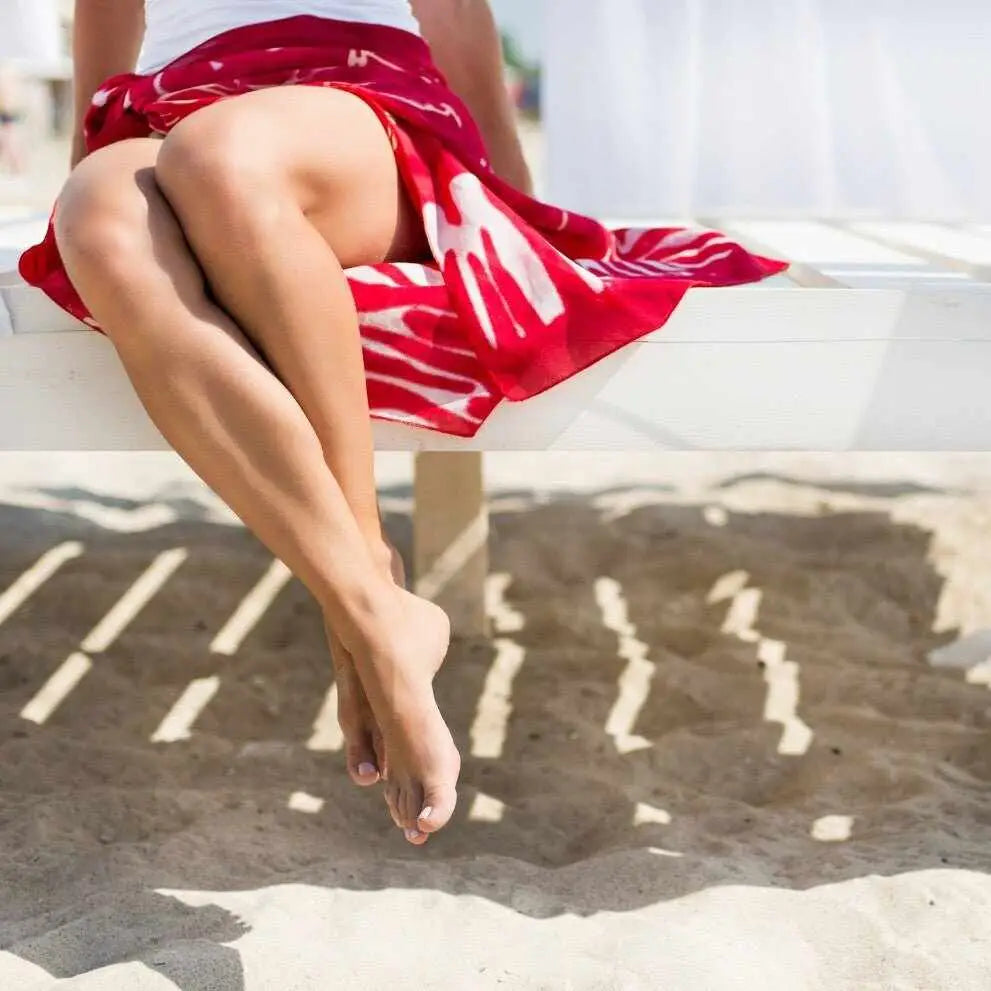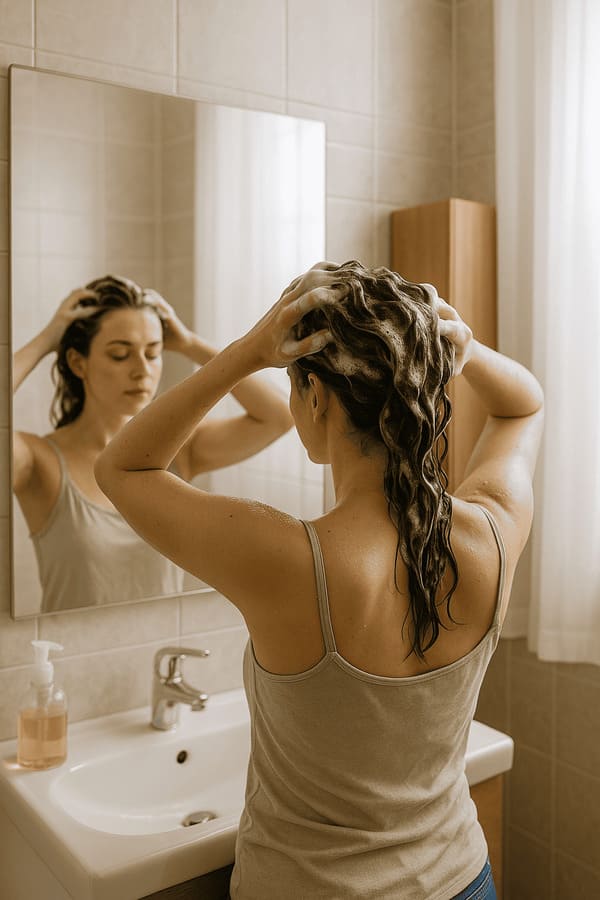Sunscreens are essential cosmetics to protect us from the sun all year round, but especially in summer when we spend much more time outdoors and begin to uncover ourselves more.
In this article we answer your frequently asked questions about sunscreens, to shed light on one of the most important cosmetics for healthy and protected skin!
In this article we talk about:
- Why do I need to protect myself from the sun's rays?
- What are UVA and UVB rays?
- What does SPF indicate?
- What are sunscreens?
- What are physical/mineral sunscreens?
- What are chemical/organic sunscreens?
- Which is better: sunscreens with chemical filters or physical filters?
- Are chemical filters safe?
- Will I tan less if I use sunscreen?
- Do sunscreens block vitamin D production?
- If I eat carrots, will I get more tanned?
- Should I use sunscreen for children?
- How much sunscreen should I apply?
- How often should sunscreen be applied?
- Can I use last year's cream?
- Does self-tanner prepare your skin for the sun?
- Do sunscreens pollute the seas?
- Is aftersun necessary?
- How to remove sunscreen?
Why do I need to protect myself from the sun's rays?
The sun has many positive effects : it helps our body produce Vitamin D – great for bones, muscles and the immune system. Sunlight also stimulates the production of endorphins, which create a good mood, improve circulation, speed up metabolism and stimulate productivity. But too much sun exposure can cause damage such as: premature aging, sun allergies and even skin cancer.
Therefore, it is essential to protect the face and body from the negative effects of UVA and UVB rays, especially the skin of children and that of people with fair skin, who suffer from sun allergies, or those who have undergone dermatological treatments.
What are UVA and UVB rays?
The sun's rays that reach our skin are of two types: UVA and UVB.
UVA rays are present all day long and can penetrate even through clouds and glass. UVB rays, on the other hand, change in intensity during the day and have their maximum power around midday.
UVA rays penetrate deep into the skin and play a major role in long-term damage, such as premature skin aging, sun allergies and DNA damage.
UVB rays are responsible for acute sun damage such as sunburn, skin cancer, and damage to the retina and eyes.
What does SPF indicate?
SPF is a number that indicates the amount of UVB radiation “stopped” by the sunscreen : an SPF 15 will let one-fifteenth of the UVB radiation pass through, while an SPF 50 will only let one-fiftieth. The higher the number, the less UVB gets through.
A cream with SPF 30 lets through no more than 1/30 of UVB rays, blocking almost 97%. A cream with SPF 50 lets through 1/50 of the rays, blocking approximately 98%.
Therefore, there are no total screen creams and in Europe, following the indications of the European Commission, it is not possible to find creams with SPF higher than 50+.
This is to protect the consumer, who could be misled by SPFs that are too high, putting their health at risk.
Some creams also offer protection from UVA rays and are indicated with the UVA label.
It is not mandatory to specify the UVA protection index at the moment, but to apply the UVA label to the product, the sunscreen must contain an anti-UVA filter equal to at least a third of the indicated SPF, so if we have a cream with SPF 30, the UVA-PF will be at least 10.
What are sunscreens?
Sunscreens are chemical compounds that absorb, scatter, or reflect UV rays.
In Europe only 28 sun filters are authorised , all of which are listed in Annex VI of EC Regulation No. 1223/2009.
What are physical/mineral sunscreens?
Physical filters, also called inorganic or mineral filters, are molecules whose main property is to reflect or diffuse UV rays.
In Europe, the following physical filters are currently permitted in sunscreens:
- titanium dioxide;
- titanium dioxide nanoparticles;
- zinc oxide;
- zinc oxide nanoparticles.
For each of these filters, the European Union establishes the maximum concentration that can be used in the finished product and what characteristics they must have, for example in terms of purity.
What are chemical/organic sunscreens?
The main feature of chemical filters is to absorb UV radiation and transform it into a form of energy that is not harmful to the skin.
There are several types of chemical filters, which are often combined to give the sunscreen a broader spectrum of radiation absorption.
Which is better: sunscreens with chemical filters or physical filters?
Both physical sunscreens and chemical sunscreens have advantages and disadvantages. Let's take a closer look.
Chemical sunscreens
Chemical sunscreens have the advantage of being particularly effective and of being able to guarantee higher sun protection, ensuring an even tan.
The disadvantage of these filters is that they absorb solar energy and, therefore, present the risk of starting photochemical reactions. So be careful about the filters you choose!
Not all filters are the same and often very low-priced sunscreens may contain low-cost ingredients that damage your skin and the environment!
Physical sunscreens
Physical sunscreens are photo-stable, are not damaged by solar radiation and, moreover, thanks to their composition, are particularly safe for the health of the skin.
The main problem with these filters is that it is not always possible to have a high protection factor without the unsightly white trail. New formulation techniques allow the use of microencapsulated filters that are easier to spread, but the textures are unfortunately still heavy when compared to products with chemical filters.
Are chemical filters safe?
A few years ago, news broke that, according to some studies, some ingredients in sunscreens can pass through the skin barrier and enter the microcirculation.
However, what is important in evaluating an ingredient is not the absorption of the molecule but what it can cause once in circulation.
For this reason, in the case of some ingredients such as sunscreens, there are safety margins. In Europe, the safety margin must be greater than 100: this means that the maximum absorption can be one hundredth of the dose that can cause damage.
Simply put, to have any potential harm from using an ingredient, we would have to use a dose over 100 times higher than that indicated!
Will I tan less if I use sunscreen?
No.
However, with sunscreen, tanning takes longer.
As we saw before, sunscreens still let some UV rays pass through, which will stimulate melanin and make us tan.
However, the amount of rays received by our skin will be less and the tan will therefore be slower and more gradual, until we reach the maximum that our phototype allows.
Do sunscreens block vitamin D production?
No.
As we have seen, sunscreens allow some of the UV rays to still hit the skin, thus stimulating the production of vitamin D necessary for our well-being.
If I eat carrots, will I tan more?
No.
A tan is caused by the stimulation of melanin that is caused by the sun's rays. There is a maximum limit to the tan that we can obtain and it is given by genetics.
Eating carrots (and orange fruits and vegetables) is still a great idea: they are rich in antioxidants and vitamin A, essential for healthy bones and eyes.
Should I use sunscreen for children?
Sunscreens for children have a more delicate formulation, often free of fragrances or potentially allergenic substances.
The Ministry of Health recommends not exposing children under 6 months of age to the sun and always preferring clothing, shade and clothes with SPF for the little ones.
Sunscreens for children are still safe, certified and controlled by the European Union but remember that children's skin is more delicate and sensitive and it is therefore better to avoid exposure to the sun, especially during the hottest hours.
How much sunscreen should I apply?
So much!
Sunscreen effectiveness tests are done on a standard dose of 2 mg of sunscreen per square centimeter of skin. This means that the SPF is calculated based on this amount.
Applying less cream means drastically reducing the protection factor.
What does this amount correspond to? An "average" person of 1.60 m x 60 kg would need about 30 g of sunscreen.
Simply put, a 150ml bottle should last just under 5 applications!
How often should sunscreen be applied?
Often.
As we have seen, sunscreen is effective as long as we use the right amount. We usually use much less and, more frequent applications, help us reach the amount necessary for good protection.
As a general rule, remember that sunscreen works like a barrier: it protects you as long as it is intact.
For this reason, apply it at least half an hour before arriving at the beach and apply it again as soon as you get there.
Reapply every 2 hours, after bathing, sweating or rubbing your skin.
Can I use last year's cream?
Better not.
All cosmetics report a PAO , which indicates the period of time in which the cosmetic is safe after opening. This guarantees that, within that period of time, the cosmetic is safe from bacterial contamination, mold, etc.
According to tests carried out by consumer associations, no differences in terms of UV protection were found in sunscreens from the previous year, but I recommend that you always use the product by the date indicated by the PAO.
If you have some sunscreen left over from the end of the summer, use it every day to protect your face, neck and décolleté even in the city: you will avoid wrinkles, spots and discolorations!
Does self-tanner prepare your skin for the sun?
No.
A tan is the result of the production of melanin, a substance that our skin produces when exposed to the sun, to protect itself from the damage of UV rays.
When we use self-tanning products, we do not stimulate melanin, but we obtain a "coloring" of the outer layers of the skin, due to a chemical reaction between a sugar contained in the product and the skin proteins.
This color is temporary and does not protect from the sun's rays.
Do sunscreens pollute the seas?
Recent studies have shown that some sunscreens can promote coral bleaching and are therefore prohibited in some areas of the world.
However, even if you choose to use sunscreens with reef-safe filters, remember that all the other components of the sunscreen can also be harmful to the marine environment, especially in areas where the water exchange is slow (for example lakes) or where there is a large influx of people.
Is aftersun necessary?
Yes.
The sun causes a lot of stress to our skin and it is therefore important to pamper it after exposure with products that contain soothing and emollient ingredients, preferably easy to spread so as to avoid rubbing.
How to remove sunscreen?
With double cleansing !
To remove all traces of sunscreen from your skin, proceed with a double cleansing: apply a vegetable oil to your face and body and massage well.
And what about fabrics? If your fabrics are stained with sunscreen, then find out the instructions on our blog








